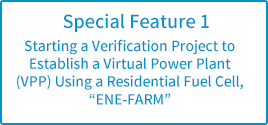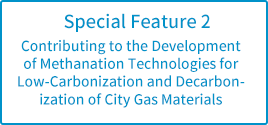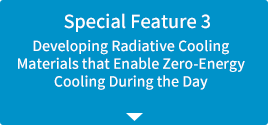Radiative cooling materials are expected to contribute to saving energy and preventing global warming because they reduce the internal air-conditioning load when used on the exterior walls of buildings, car bodies, etc.
Special Feature 3: Developing Radiative Cooling Materials that Enable Zero-Energy Cooling During the Day


Technology that Contributes to the SDGs
Innovation by the Daigas Group
-
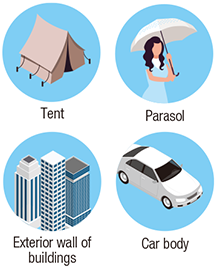
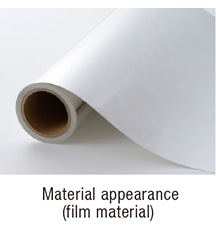
-
“Radiative cooling” refers to the cooling effect when heat on earth is released into space as a kind of light called thermal radiation.* This effect is well known as the reason temperature falls at night, but in fact, it also occurs during the day. During the day, however, the temperature of metal and concrete rises above the ambient temperature because the heat energy input from sunlight is greater than the energy radiated through thermal radiation. Traditional methods of combating heat generally relied on the use of materials to block light, paints that reflect solar radiation, etc., but although these methods limited the increase in temperature by blocking light and reflecting sunlight, the materials themselves absorbed heat and became warmer than the ambient temperature. At Osaka Gas, we focused on the fact that the temperature of a material will be cooler than surrounding temperatures if the energy radiated is greater than the heat energy input. As a result, we succeeded in developing radiative cooling materials that utilize our expertise in optical and thermal radiation controls. It has been confirmed that the temperature of these materials falls to 2 - 6℃ lower than the ambient temperature, even under direct sunlight. Going forward, we intend to test the durability and other aspects of these materials.
- * Thermal radiation: A phenomenon whereby heat from a heated substance is released as electromagnetic waves (light).
- Management Plan
- Management Plan Documents Long-Term Management Vision2030/Medium-Term Management Plan 2026
- Daigas Group's Values
- Daigas Group's Values Daigas Group Corporate Principles Daigas Group Charter of Business Conduct Daigas Group Code of Business Conduct Our Declaration Daigas Group Policies
- Sustainability Management
- Promotion System Materiality of the Daigas Group Stakeholder Engagement History of Co-creation of Value Value Creation Process
- Environment
-
Environment
Environmental Management
Daigas Group Environmental Policy
Estimation Method of Environmental Accounting
Environmental Impact throughout the Daigas Group Value Chain
Environmental Targets
Actions for Climate Change
Assessment of CO₂ Emissions Reduction Effects
Disclosure Based on the TCFD Recommendations:
Recognition of and Action on Risks and Opportunities Contributing to the Resource-Recycling Society Data Trends Regarding Resource Recycling Information Disclosure on the Research Results of Soil and Groundwater Conservation Biodiversity Daigas Group Biodiversity Policy Development of Environmental Technology
- Social
-
Social
Innovation Management
Promoting Business Transformation with DX Research and Development/Intellectual Property/New Businesses Creation Human Resources Management/Human Resources Strategy Targets Human Resources Development DE&I (Diversity, Equity, and Inclusion) Daigas Group Diversity Promotion Policy Work-Life Balance Occupational Health and Safety Communication Between Employees and Company Human Rights
Respect for Human Rights throughout the Value Chain
Human Rights Due Dilligence
Action for Human Rights Daigas Group Human Rights Policy Supply Chain Management Daigas Group Procurement Policy Social Impact of Business Activities in Our Energy Value Chain Customer Health and Safety Customer Satisfaction Community
Co-creation Activities with Local Communities
Activities by Public Interest Incorporated Foundations
- Governance
- Governance Corporate Governance Dialogue between Outside Directors and Institutional Investors Compliance Consultations and Reports from Partner Companies Information Security Protect Personal Information
- Reporting Guidelines
- Global Reporting Initiative (GRI) Index SASB Table Reference for the Environmental Reporting Guidelines of the Ministry of the Environment TCFD Recommendations Table

